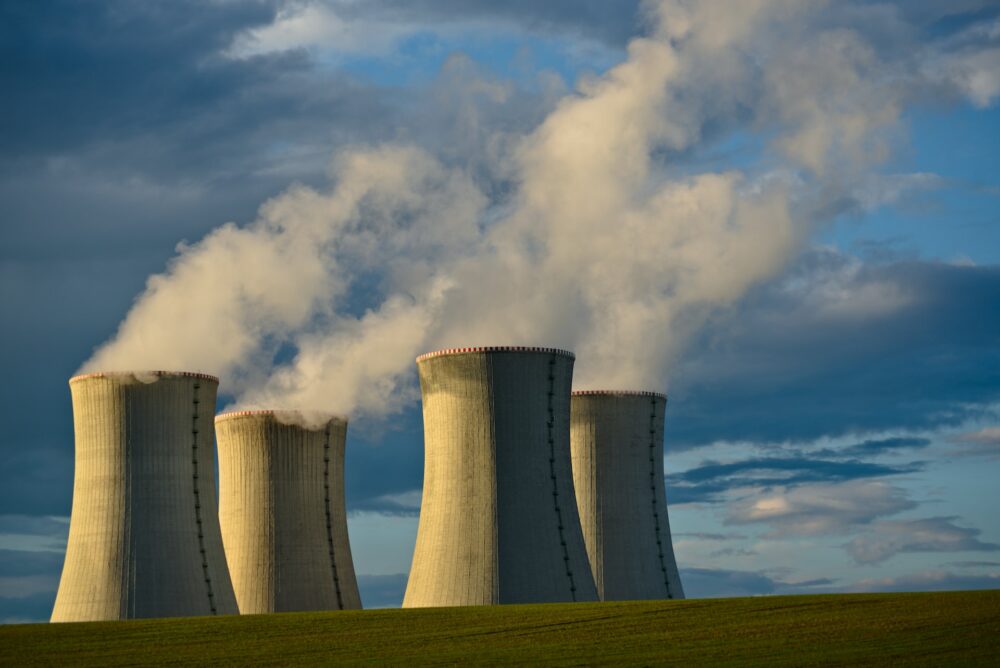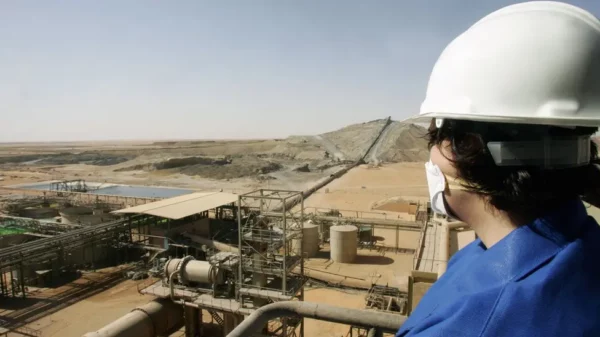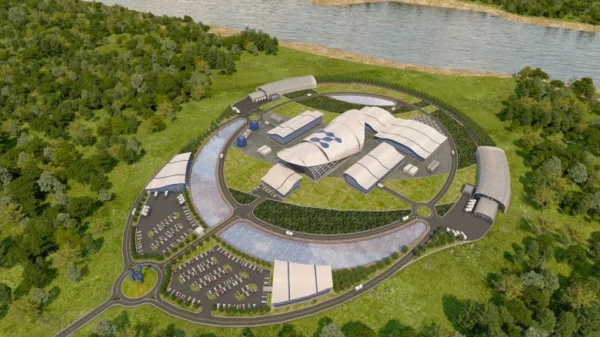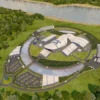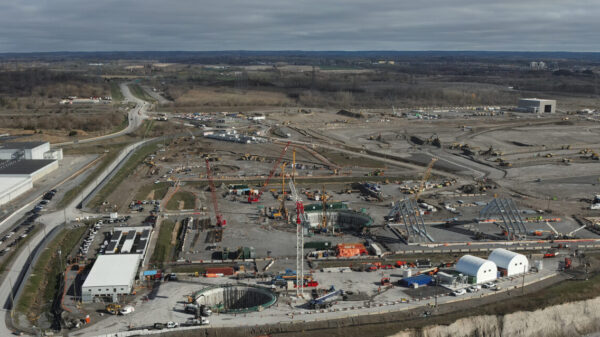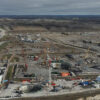The Province of Ontario is investigating the feasibility of building new large-scale nuclear power plants as an alternative to natural gas production to meet the province’s increasing demand for electricity.
A report from the Independent Electricity System Operator (IESO) revealed that the province’s electrical system could be entirely free of natural gas as early as 2050, beginning with a moratorium in 2027. It would cost $400 billion in capital spending and more generation including new, large scale nuclear plants.
Presently, about 15 per cent of Canada’s electricity comes from nuclear power, with 19 reactors, most in Ontario, providing 13.6 electrical gigawatts of power capacity.
In addition to new nuclear options, decarbonizing the grid will require more conservation efforts, including more renewable energy sources and more energy storage, according to the report.
The province hasn’t committed to a natural gas moratorium, nor to building any new nuclear facilities. So far, it’s commitments include plans for a small modular reactor, but it is consulting on the project.
The IESO suggested work should start now to determine what new technologies could be useful to replace natural gas. Especially during the interim period where large nuclear plants and hydroelectric facilities were being set up. Also, there’s the possibility of an electricity supply crunch.
Read more: Canada launches $29.6M small modular reactor funding program to mitigate fossil fuels
Read more: Ontario Power Generation partners with tech firms to build small modular reactor
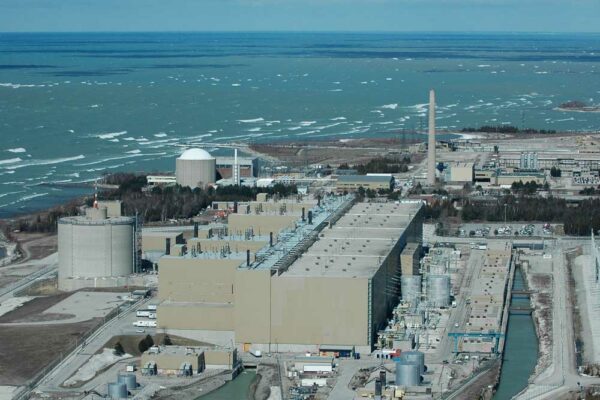
Bruce Nuclear Generating Station, operating eight CANDU reactors, is the largest nuclear power plant in the world by net operating capacity. Image from Chuck Szmurlo via Wikimedia Commons.
Electricity supply crunch could slow transition from natural gas
Ontario is threatened with a potential energy shortage as a nuclear plant is set to retire and others are being refurbished.
The shortage came about from Ford government’s 2018 decision to cancel 758 signed contracts for local renewable energy projects.
Meanwhile, demand increases from sources like electric vehicles, battery manufacturing and the greenhouse and mining industries are adding substantial strain.
Conversely, a study produced by Dunsky Energy + Climate Advisors revealed the province could deliver adequate distributed energy resources to cover the supply shortage over the next decade, without needing to rely on gas plants or nuclear. Also, Clean Energy Canada concluded from Dunsky analysis that wind and solar farms with battery backup were both cheaper to build in Ontario than natural gas plants.
The Coalition for Responsible Energy Development (CRED) in New Brunswick also suggested a shift to modular reactors might not be the right choice. After crunching the numbers in the province’s potential deal with small modular reactor (SMR) startup Moltex, it determined it could carry a price tag in excess of $250 million in development costs.
Read more: California extends nuclear facility permit for five more years
Read more: The Mugglehead technology roundup: the future is nuclear
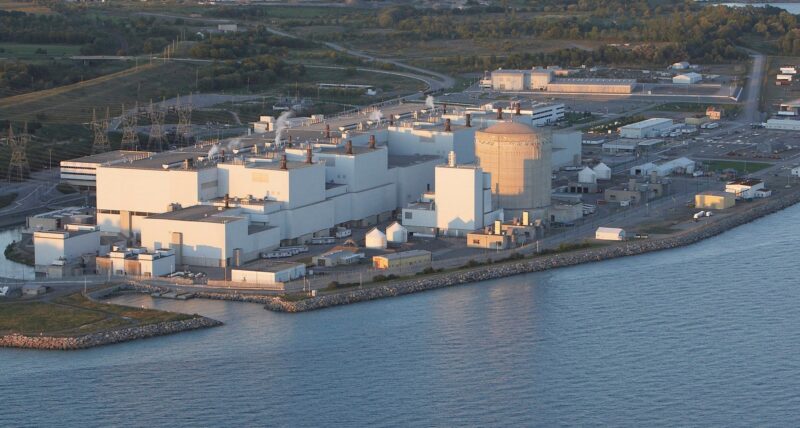
Darlington NPP Viewed from a drone above lake Ontario. Image from Ontario Power Generation via wikimedia commons.
Ontario Power Generation constructing an SMR
SMRs are a type of nuclear reactor designed to be smaller and more flexible than traditional large-scale nuclear power plants.
There are several benefits and disadvantages associated with SMRs. They’re cheaper to build and operate, but also flexible and safer than larger reactors. They also use less water and generate less waste.
Earlier this year, Ontario Power Generation (OPG) inked an agreement with a team of nuclear experts to build the reactor over the next six years. This team includes Candu Energy Inc., a member of the SNC-Lavalin Group (TSX: SNC), GE Hitachi Nuclear Energy and Aecon.
The Darlington New Nuclear Project is deploying the GEH BWRX-300, the first grid-scale SMR deployed in Canada.
The government consultation asks whether any additional investments should be made in clean energy in the short term to decrease the province’s reliance on gas, even if it increases costs to the electricity system and ratepayers. But Energy Minister Todd Smith doesn’t like the idea of higher costs.
“We’re not going to sacrifice reliability and affordability,” Smith said. “We have to have a reliable and affordable system, otherwise we won’t have people moving to electrification.”
In the study, the IESO suggests the moratorium on natural gas generation is possible following the completion of its present long-term procurements. These include up to 1,500 megawatts of new natural gas capacity to meet supply needs in the mid-2020s.
The moratorium assessment shows demand projections for 2035 can be met with the construction of non-emitting sources. Even such, some natural gas will still be needed for local needs and for services to reliably operate the system.
Follow Joseph Morton on Twitter
joseph@mugglehead.com

